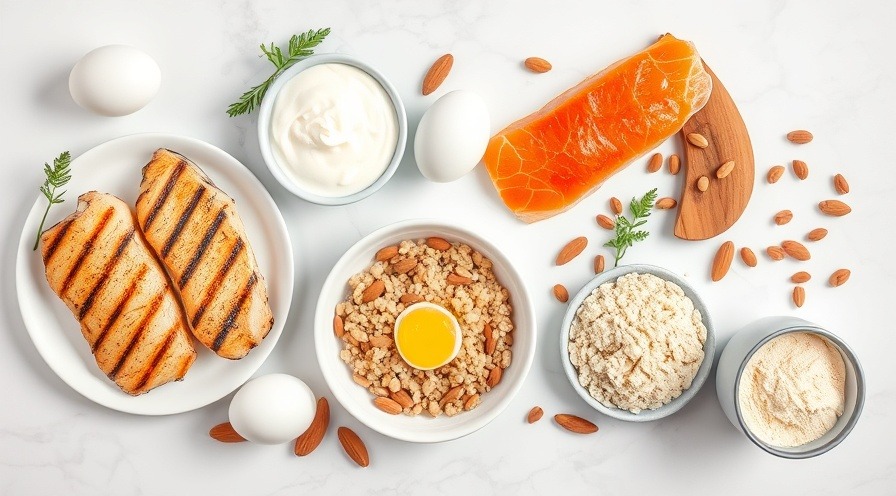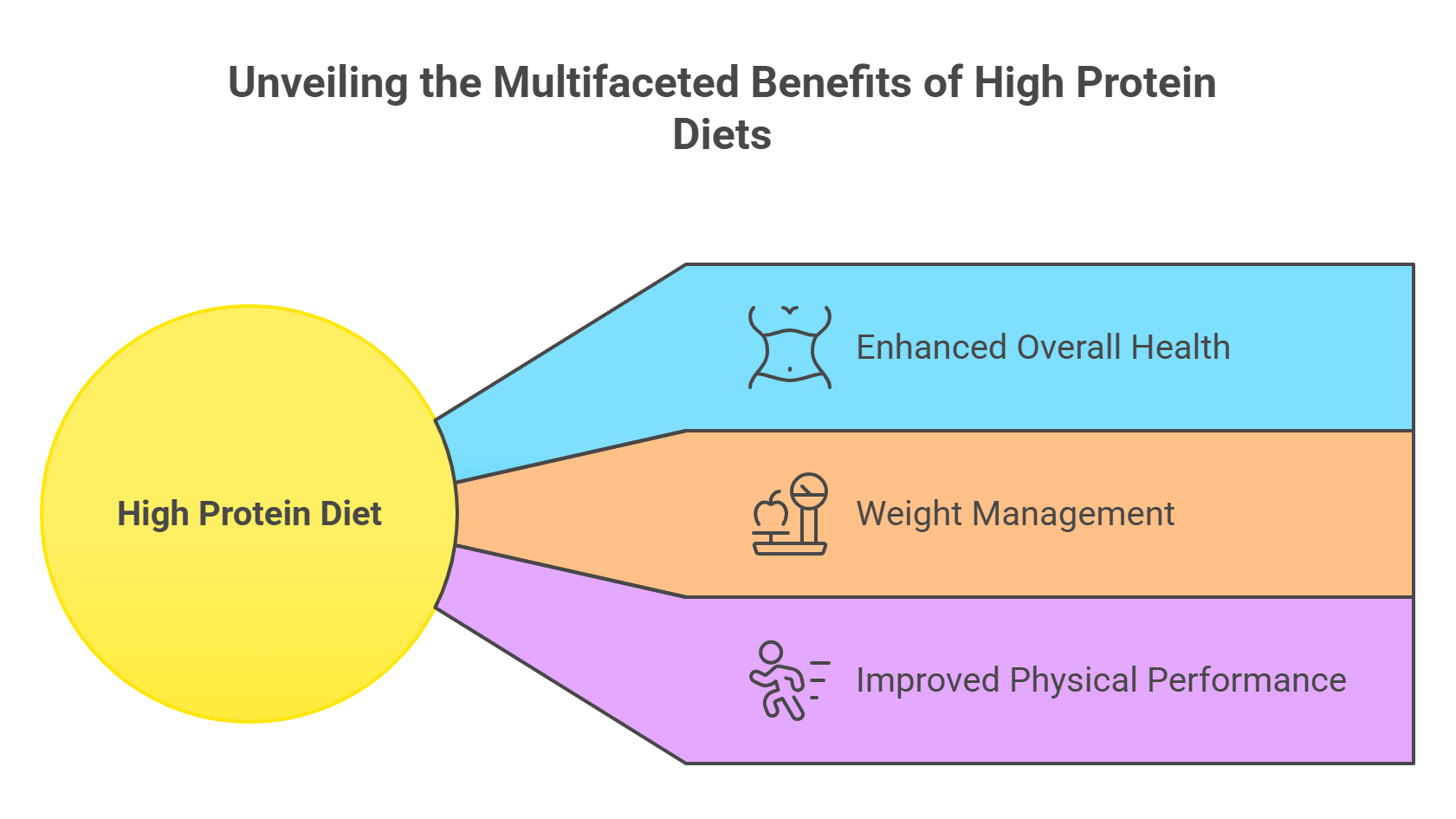
9 Game-Changing Benefits of a High Protein Diet
(Your Body Will Thank You!)
Ever wondered why your gym buddy swears by their protein shake, or why that colleague who's always munching on hard-boiled eggs seems to have endless energy? The secret might just be swimming in their breakfast bowl.
If you've been scrolling through health advice wondering whether all the protein hype is worth it, you're in for a treat. A high protein diet isn't just for bodybuilders flexing in front of mirrors – it's a science-backed approach to better health that can transform how you feel, look, and perform every single day.
What Exactly Is a High Protein Diet?
Before we dive into the benefits that'll make you want to raid the nearest chicken coop, let's get clear on what we're talking about. High-protein diets typically involve consuming more than 20% of your total daily calories from protein sources, which is significantly higher than the standard recommendation.
Think lean meats, fish, eggs, dairy, legumes, and yes – even that trendy protein powder your neighbor keeps raving about.
9 Amazing Benefits That'll Make You a Protein Convert
1. Weight Loss That Actually Sticks
Here's where protein becomes your weight loss superhero. Research published in the American Journal of Clinical Nutrition shows that higher-protein diets have been successfully used as a strategy to prevent or treat obesity through improvements in body weight management, with these improvements thought to be due to modulations in energy metabolism, appetite, and energy intake.
Translation? You lose the jiggly bits while keeping the muscle that makes you strong. It's like having a personal trainer working from the inside out.
2. Satiety: Your New Best Friend
Ever finish a carb-heavy meal only to find yourself eyeing the pantry an hour later? According to Dr. Margriet Westerterp-Plantenga and colleagues' research published in the American Journal of Clinical Nutrition, protein generally increases satiety to a greater extent than carbohydrate or fat and may facilitate a reduction in energy consumption
Simply put, protein keeps you fuller for longer, making those late-night kitchen raids a thing of the past.
3. Muscle Building and Maintenance
Whether you're 25 or 65, your muscles are always in a state of breakdown and repair. Dr. Donald Layman, Professor Emeritus at the University of Illinois and internationally recognized protein researcher, explains that protein turnover has a lot to do with long-term health and aging, with this constant rate of repair being crucial for maintaining muscle mass.
As we age, this becomes even more crucial since muscles tend to gradually weaken, affecting their strength, function, and mobility.

4. Metabolic Boost That Burns Calories
Here's a fun fact that'll make you smile: your body actually burns more calories digesting protein than it does processing carbs or fats. According to research in the Journal of the American College of Nutrition, this thermic effect of protein can increase energy expenditure by up to 30%, compared to just 6-8% for carbohydrates and 2-3% for fats.
This metabolic advantage means you're literally burning extra calories just by eating – talk about effortless calorie burning!
5. Better Body Composition
High protein diets don't just help you lose weight – they help you lose the right kind of weight. Studies consistently show that higher protein intake leads to greater fat loss while preserving precious muscle mass, giving you that toned, defined look rather than just becoming a smaller version of your current shape.
6. Improved Recovery and Performance
Whether you're a weekend warrior or a daily gym-goer, protein is your recovery champion. It provides the building blocks your muscles need to repair themselves after workouts, reducing soreness and getting you back to peak performance faster.
7. Bone Health Support
Contrary to old myths about protein being bad for bones, research shows that adequate protein intake actually supports bone health, especially when combined with weight-bearing exercise. Your skeleton needs protein just as much as your muscles do!
8. Better Blood Sugar Control
Protein helps slow down the absorption of sugars, leading to more stable blood glucose levels throughout the day. This means fewer energy crashes and more sustained, steady energy – perfect for conquering that afternoon slump without reaching for sugary snacks.

9. Long-term Health Benefits
Research in resistance-trained men consuming a high protein diet for one year showed no harmful effects on measures of blood lipids as well as liver and kidney function, debunking concerns about protein safety when consumed as part of a balanced diet.
The Bottom Line
A high protein diet isn't just another trendy eating plan – it's a scientifically-supported approach to better health that delivers real, measurable benefits. From helping you maintain a healthy weight to keeping your muscles strong and your energy levels stable, protein truly is a nutritional powerhouse.
Remember, the key is balance and quality. Focus on diverse, whole food protein sources, and don't forget that vegetables, healthy fats, and complex carbohydrates still have important roles in your overall nutrition plan.
Disclaimer: This article is for informational purposes only and should not replace professional medical advice. Always consult with a healthcare provider or registered dietitian before making significant changes to your diet, especially if you have underlying health conditions or concerns about kidney function.
 Add Row
Add Row  Add
Add 




Write A Comment